Courses


 Compare
Compare
studying Our Environment focuses on understanding the world around you, including: Everything that surrounds us: This encompasses living things (plants, animals) and non-living things (air, water, soil). The link between living and non-living things: They interact and depend on each other for survival. Ecosystems: These are self-sustaining communities of living organisms interacting with their physical environment. Forests, ponds, and deserts are all examples. Human impact: We'll explore how our actions can affect the environment, both positively and negatively. It's essentially learning how everything fits together to support life on Earth. পড়াশুনা আমাদের পরিবেশ আপনার চারপাশের বিশ্বকে বোঝার উপর দৃষ্টি নিবদ্ধ করে, যার মধ্যে রয়েছেঃ আমাদের চারপাশের সবকিছুঃ এটি জীবন্ত জিনিস (উদ্ভিদ, প্রাণী) এবং নির্জীব জিনিসগুলিকে অন্তর্ভুক্ত করে। (air, water, soil). জীবন্ত এবং নির্জীব জিনিসের মধ্যে যোগসূত্রঃ তারা বেঁচে থাকার জন্য একে অপরের উপর নির্ভর করে। বাস্তুতন্ত্রঃ এগুলি হল জীবিত প্রাণীর স্বনির্ভর সম্প্রদায় যা তাদের ভৌত পরিবেশের সাথে মিথস্ক্রিয়া করে। বন, পুকুর এবং মরুভূমি সবই এর উদাহরণ। মানুষের প্রভাবঃ আমাদের কাজগুলি কীভাবে ইতিবাচক ও নেতিবাচক উভয়ভাবেই পরিবেশকে প্রভাবিত করতে পারে তা আমরা অন্বেষণ করব। এটি মূলত শিখছে যে কীভাবে পৃথিবীতে জীবনকে সমর্থন করার জন্য সবকিছু একসাথে ফিট করে।
0 Lessons
Hours
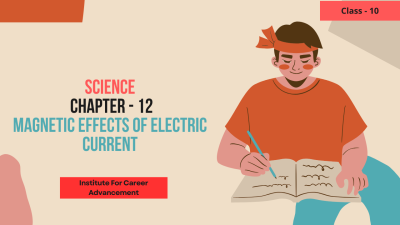
 Compare
Compare
Electric current creates a magnetic field around it. Imagine invisible circles around the wire carrying the current. The stronger the current, the stronger the magnetic field. The direction of the magnetic field depends on the direction of current flow. There are handy rules like the right-hand thumb rule to figure this out. This magnetic field can exert a force on magnets. A compass needle, for example, will deflect when placed near a current-carrying wire. This connection between electricity and magnetism is a fundamental principle behind many things we use today, from electromagnets in motors to speakers. এর চারপাশে বৈদ্যুতিক প্রবাহ একটি চৌম্বক ক্ষেত্র তৈরি করে। বিদ্যুৎ বহনকারী তারের চারপাশে অদৃশ্য বৃত্তের কথা কল্পনা করুন। বিদ্যুৎ যত শক্তিশালী হবে, চৌম্বক ক্ষেত্র তত শক্তিশালী হবে। চৌম্বক ক্ষেত্রের দিকটি বিদ্যুৎ প্রবাহের দিকের উপর নির্ভর করে। এটি বের করার জন্য ডান হাতের বুড়ো আঙুলের নিয়মের মতো সহজ নিয়ম রয়েছে। এই চৌম্বক ক্ষেত্র চুম্বকের উপর বল প্রয়োগ করতে পারে। উদাহরণস্বরূপ, একটি কম্পাস সুই বিদ্যুৎ-বহনকারী তারের কাছে স্থাপন করা হলে বিপথগামী হবে। বিদ্যুৎ এবং চুম্বকত্বের মধ্যে এই সংযোগটি মোটরের বৈদ্যুতিন চৌম্বক থেকে শুরু করে স্পিকার পর্যন্ত আমরা আজ ব্যবহার করি এমন অনেক কিছুর পিছনে একটি মৌলিক নীতি।
0 Lessons
Hours
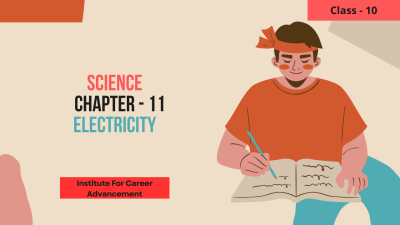
 Compare
Compare
In your Class 10 Electricity course, you'll unlock the secrets of the power that keeps our world running! You'll delve into the basics of electricity, exploring concepts like electric current (flow of charges), circuits (closed paths for current), voltage (pressure for current flow), resistance (opposition to current), and power (rate of energy use). Imagine tiny charged particles zipping through wires, lighting up your home, or powering your favorite devices. This course will help you understand how it all works! You'll also learn about the many ways electricity is used in our daily lives, from lighting and appliances to communication and transportation. Get ready to be charged up with knowledge! আপনার দশম শ্রেণির বিদ্যুৎ কোর্সে, আপনি সেই শক্তির রহস্য উন্মোচন করবেন যা আমাদের বিশ্বকে সচল রাখে! বৈদ্যুতিক প্রবাহ (চার্জের প্রবাহ) সার্কিট (বর্তমানের জন্য বন্ধ পথ) ভোল্টেজ (বর্তমান প্রবাহের জন্য চাপ) প্রতিরোধ (বর্তমানের বিরোধিতা) এবং শক্তির মতো ধারণাগুলি অন্বেষণ করে আপনি বিদ্যুতের মূল বিষয়গুলি অনুসন্ধান করবেন। (rate of energy use). কল্পনা করুন যে ক্ষুদ্র আধানযুক্ত কণাগুলি তারের মধ্য দিয়ে ঝাঁপিয়ে পড়ছে, আপনার ঘরকে আলোকিত করছে বা আপনার পছন্দের যন্ত্রগুলিকে শক্তি দিচ্ছে। এই কোর্সটি আপনাকে বুঝতে সাহায্য করবে যে এটি কীভাবে কাজ করে! আপনি আমাদের দৈনন্দিন জীবনে আলো এবং যন্ত্রপাতি থেকে শুরু করে যোগাযোগ এবং পরিবহন পর্যন্ত বিভিন্ন উপায়ে বিদ্যুতের ব্যবহার সম্পর্কেও শিখবেন। জ্ঞান আহরণের জন্য প্রস্তুত হোন!
0 Lessons
Hours
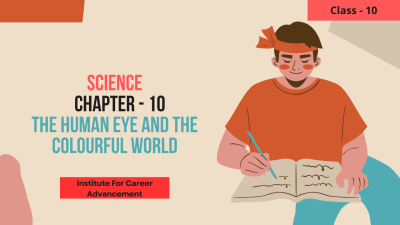
 Compare
Compare
The human eye is one of the most valuable and sensitive sense organs, which enable us to see the colourful world around us. It is just like a photographic camera. The lens system of the eye forms an image of the object on a light sensitive screen. The Human Eye STRUCTURE OF HUMAN EYE: The human eye has the following parts : Cornea : It is the transparent spherical membrane covering the front of the eye. Iris : It is the coloured diaphragm between the cornea and lens. Pupil : It is the small hole in the iris. Eye lens : it is a transparent lens made of jelly like material. Ciliary muscles : These muscles hold the lens in positions. Retina : It is the back surface of the eye. Blind spot : It is the point at which the optic nerve leaves the eye. An image formed at this point is not sent to the brain. Aqueous humor : It is clear liquid region between the cornea and the lens. Vitreous humor : The space between eye lens and retina is filled with another liquid called vitreous humor.In the eye, the image is formed on the retina by successive refractions at the cornera, the aqueous humor, the lens and the vitreous humor. Electrical signals then travel along the optic nerve to the brain to be interpreted. In good light, the yellow spot is most sensitive to detail and the image is automatically formed there. মানুষের চোখ হল সবচেয়ে মূল্যবান এবং সংবেদনশীল ইন্দ্রিয় অঙ্গগুলির মধ্যে একটি, যা আমাদের চারপাশের রঙিন বিশ্বকে দেখতে সক্ষম করে। এটি ঠিক একটি ফটোগ্রাফিক ক্যামেরার মতো। চোখের লেন্স ব্যবস্থা একটি হালকা সংবেদনশীল পর্দায় বস্তুর একটি চিত্র তৈরি করে। মানুষের চোখ মানুষের চোখের গঠনঃ মানুষের চোখের নিম্নলিখিত অংশগুলি রয়েছেঃ কর্নিয়াঃ এটি চোখের সামনের অংশকে আচ্ছাদনকারী স্বচ্ছ গোলাকার ঝিল্লি। আইরিসঃ এটি কর্নিয়া এবং লেন্সের মধ্যবর্তী রঙিন ডায়াফ্রাম। ছাত্রঃ এটি আইরিসের ছোট গর্ত। চোখের লেন্সঃ এটি জেলির মতো উপাদান দিয়ে তৈরি একটি স্বচ্ছ লেন্স। সিলিয়ারি পেশীঃ এই পেশীগুলি লেন্সকে অবস্থানে ধরে রাখে। রেটিনাঃ এটি চোখের পিছনের পৃষ্ঠ। ব্লাইন্ড স্পটঃ এটি সেই বিন্দু যেখানে অপটিক স্নায়ু চোখ ছেড়ে যায়। এই মুহুর্তে গঠিত একটি চিত্র মস্তিষ্কে পাঠানো হয় না। জলীয় রসঃ এটি কর্নিয়া এবং লেন্সের মধ্যে পরিষ্কার তরল অঞ্চল। ভিট্রিয়াস হিউমারঃ চোখের লেন্স এবং রেটিনার মধ্যবর্তী স্থানটি ভিট্রিয়াস হিউমার নামে আরেকটি তরল দিয়ে ভরা হয়।চোখের মধ্যে, কর্নেরা, জলীয় হাস্যরস, লেন্স এবং কাঁচের হাস্যরসের ধারাবাহিক প্রতিসরণের মাধ্যমে রেটিনার উপর চিত্রটি তৈরি হয়। বৈদ্যুতিক সংকেতগুলি তখন অপটিক স্নায়ু বরাবর মস্তিষ্কে ব্যাখ্যা করার জন্য ভ্রমণ করে। ভাল আলোতে, হলুদ দাগটি বিশদ বিবরণের প্রতি সবচেয়ে সংবেদনশীল এবং সেখানে চিত্রটি স্বয়ংক্রিয়ভাবে গঠিত হয়।
0 Lessons
Hours
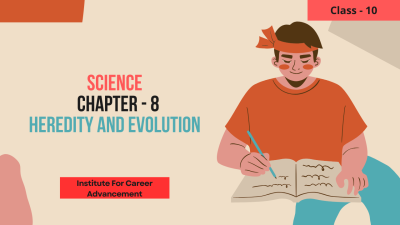
 Compare
Compare
In Class 10, Heredity and Evolution join forces! Here's a quick explanation: Heredity: It's about passing on traits from parents to offspring. Imagine inheriting your mom's eye color or your dad's curly hair. Evolution: This explores how living things change over generations. Think dinosaurs evolving into birds! The Connection: Heredity provides the variations (traits passed on) that Evolution acts upon. These variations can help some organisms survive better and reproduce more, leading to gradual changes in a population over time. দশম শ্রেণীতে, বংশগত এবং বিবর্তন শক্তি যোগ করে! এখানে একটি দ্রুত ব্যাখ্যাঃ বংশগতঃ এটি বাবা-মা থেকে সন্তানদের মধ্যে বৈশিষ্ট্যগুলি প্রেরণ করার বিষয়ে। আপনার মায়ের চোখের রঙ বা আপনার বাবার কোঁকড়া চুল উত্তরাধিকারসূত্রে পাওয়ার কথা কল্পনা করুন। বিবর্তনঃ এটি আবিষ্কার করে যে কীভাবে প্রজন্মের পর প্রজন্ম ধরে জীবন্ত জিনিসগুলি পরিবর্তিত হয়। মনে করুন ডাইনোসররা পাখিতে রূপান্তরিত হচ্ছে! সংযোগঃ বংশানুক্রমিকতা বিবর্তন যে বৈচিত্র্যের উপর কাজ করে তা প্রদান করে। এই বৈচিত্রগুলি কিছু জীবকে আরও ভালভাবে বেঁচে থাকতে এবং আরও বেশি প্রজনন করতে সহায়তা করতে পারে, যা সময়ের সাথে সাথে জনসংখ্যার ধীরে ধীরে পরিবর্তনের দিকে পরিচালিত করে।
0 Lessons
Hours

 Compare
Compare
Here's a short description of reproduction: The Big Picture: It's all about creating new individuals to keep the species going. There are two main ways organisms reproduce: Asexual Reproduction: One parent is involved, and the offspring are genetically identical to the parent (think of taking cuttings from a plant). Sexual Reproduction: Two parents are involved, and the offspring have a mix of genes from both parents (like you inheriting traits from your mom and dad). Asexual Methods: Some organisms reproduce by fission (splitting in two), budding (growing a new individual from the parent), or spore formation (tiny reproductive units that grow into new organisms). Sexual Methods: Sexual reproduction involves the fusion of sex cells (egg and sperm) to form a zygote, which develops into a new organism. এখানে প্রজননের একটি সংক্ষিপ্ত বিবরণ দেওয়া হলঃ বড় ছবিঃ প্রজাতিটি চালিয়ে যাওয়ার জন্য এটি নতুন ব্যক্তি তৈরি করার বিষয়ে। জীবের পুনরুত্পাদন করার দুটি প্রধান উপায় রয়েছেঃ অযৌন প্রজনন (Asexual reproduction): পিতামাতার মধ্যে একজন জড়িত, এবং সন্তানরা পিতামাতার সাথে জিনগতভাবে অভিন্ন। (think of taking cuttings from a plant). যৌন প্রজননঃ দুই পিতামাতা জড়িত, এবং সন্তানদের উভয় পিতামাতার কাছ থেকে জিনের মিশ্রণ রয়েছে। (like you inheriting traits from your mom and dad). অযৌন পদ্ধতিঃ কিছু জীব বিভাজনের (দুই ভাগে বিভক্ত) মাধ্যমে প্রজনন করে। (tiny reproductive units that grow into new organisms). যৌন পদ্ধতিঃ যৌন প্রজননে যৌন কোষের (ডিম এবং শুক্রাণু) সংমিশ্রণে একটি জাইগোট তৈরি হয়, যা একটি নতুন জীবের মধ্যে বিকশিত হয়।
0 Lessons
Hours
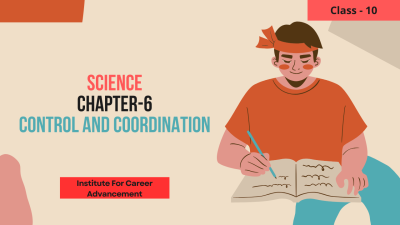
 Compare
Compare
In Class 10, Control and Coordination deals with how our body senses the environment and reacts accordingly. Here's a short description: The Big Picture: It's about how different body parts work together to allow you to respond to your surroundings. Imagine dodging a ball - your eyes see it, your brain sends signals, and your muscles move you out of the way. Key Players: The nervous system (brain, spinal cord, nerves) acts as the control center, sending messages. The endocrine system (hormones) also plays a role in coordinating some responses. Sensing the World: Sense organs like eyes, ears, nose, tongue, and skin detect changes (light, sound, smell, taste, touch). Taking Action: Muscles receive signals from the nervous system and contract or relax, allowing you to move and react. দশম শ্রেণীতে, কন্ট্রোল অ্যান্ড কোঅর্ডিনেশন আমাদের শরীর কীভাবে পরিবেশকে অনুধাবন করে এবং সেই অনুযায়ী প্রতিক্রিয়া জানায় তা নিয়ে আলোচনা করে। এখানে একটি সংক্ষিপ্ত বিবরণ দেওয়া হলঃ দ্য বিগ পিকচারঃ এটি হল কীভাবে শরীরের বিভিন্ন অঙ্গগুলি একসাথে কাজ করে যাতে আপনি আপনার আশেপাশে সাড়া দিতে পারেন। একটি বল এড়িয়ে যাওয়ার কথা কল্পনা করুন-আপনার চোখ এটি দেখতে পায়, আপনার মস্তিষ্ক সংকেত পাঠায় এবং আপনার পেশীগুলি আপনাকে পথ থেকে সরিয়ে দেয়। মূল খেলোয়াড়ঃ স্নায়ুতন্ত্র (মস্তিষ্ক, মেরুদণ্ড, স্নায়ু) নিয়ন্ত্রণ কেন্দ্র হিসাবে কাজ করে, বার্তা প্রেরণ করে। অন্তঃস্রাবী তন্ত্রও (হরমোন) কিছু প্রতিক্রিয়ার সমন্বয়ে ভূমিকা পালন করে। বিশ্বকে অনুধাবন করাঃ চোখ, কান, নাক, জিহ্বা এবং ত্বকের মতো ইন্দ্রিয়গুলি পরিবর্তনগুলি (আলো, শব্দ, গন্ধ, স্বাদ, স্পর্শ) সনাক্ত করে। পদক্ষেপ নেওয়াঃ পেশীগুলি স্নায়ুতন্ত্র থেকে সংকেত গ্রহণ করে এবং সঙ্কুচিত বা শিথিল হয়, যা আপনাকে নড়াচড়া এবং প্রতিক্রিয়া করতে দেয়।
0 Lessons
Hours

 Compare
Compare
Carbon belongs to the 14th group of the periodic table. Carbon forms organic as well as inorganic compounds. Originally compounds like urea, sugars, fats, oils, dyes, proteins, vitamins etc, which were isolated directly or indirectly from living organisms such as animals and plants were called organic compounds. In contrast, compounds like common salt, marble, alums, nitre, blue and green vitriols etc. which are isolated from non−living sources such as rocks and minerals were called inorganic compounds. কার্বন পর্যায় সারণির 14তম গ্রুপের অন্তর্গত। কার্বন জৈব এবং অজৈব যৌগ গঠন করে। মূলত ইউরিয়া, চিনি, চর্বি, তেল, রঞ্জক পদার্থ, প্রোটিন, ভিটামিন ইত্যাদির মতো যৌগগুলি, যেগুলি প্রত্যক্ষ বা পরোক্ষভাবে প্রাণী ও উদ্ভিদের মতো জীব থেকে বিচ্ছিন্ন ছিল, সেগুলিকে জৈব যৌগ বলা হত। এর বিপরীতে, সাধারণ লবণ, মার্বেল, আলুম, নাইট্রে, নীল এবং সবুজ ভিট্রিওল ইত্যাদির মতো যৌগ। যেগুলি শিলা ও খনিজ পদার্থের মতো অ-জীবন্ত উৎস থেকে বিচ্ছিন্ন, সেগুলিকে অজৈব যৌগ বলা হত।
0 Lessons
Hours
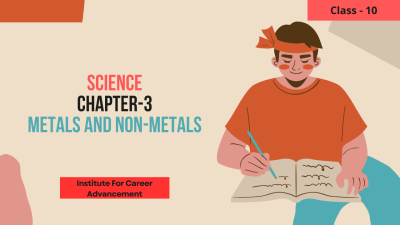
 Compare
Compare
Elements are classified into two basic categories, metals and non-metals. Metal And Non-metals There are about 90 elements, up to Uranium, that are found naturally. Another 20 elements, beyond Uranium, called trans-uranium elements, have been produced artificially in the laboratories by nuclear reactions. Two elements, Technetium (Tc) and Promethium (Pm) that occur below Uranium are unstable in nature. Elements can be classified by the physical and chemical properties that they display Metals are defined as those elements which possess lusture, are malleable and ductile and good conductors of heat and electricity. Or Metals are the elements which form positive ions by losing electrons i.e. they are electropositive elements. For e.g. sodium, magnesium, potassium, aluminium, copper, silver, gold etc. Non-metals are defined as those elements which do not possess lusture and are neither good conductors of heat and electricity nor malleable. They are not ductile but are brittle. Or Non-metals are the elements which form negative ions by gaining electrons i.e. they are electronegative elements. For e.g. carbon, hydrogen, oxygen, nitrogen, sulphur, bromine etc. উপাদানগুলিকে দুটি মৌলিক বিভাগে শ্রেণীবদ্ধ করা হয়, ধাতু এবং অ-ধাতু। ধাতু ও অ-ধাতু ইউরেনিয়াম পর্যন্ত প্রায় 90টি মৌল প্রাকৃতিকভাবে পাওয়া যায়। ইউরেনিয়ামের বাইরে আরও 20টি উপাদান, যাকে ট্রান্স-ইউরেনিয়াম উপাদান বলা হয়, পরীক্ষাগারে পারমাণবিক বিক্রিয়ার মাধ্যমে কৃত্রিমভাবে তৈরি করা হয়েছে। ইউরেনিয়ামের নিচে থাকা দুটি মৌল, টেকনেটিয়াম (টি. সি) এবং প্রোমিথিয়াম (পি. এম) প্রকৃতিতে অস্থিতিশীল। উপাদানগুলিকে তাদের প্রদর্শিত ভৌত ও রাসায়নিক বৈশিষ্ট্য অনুসারে শ্রেণীবদ্ধ করা যেতে পারে। ধাতুগুলিকে সেই উপাদান হিসাবে সংজ্ঞায়িত করা হয় যেগুলি উজ্জ্বলতা ধারণ করে, নমনীয় এবং নমনীয় এবং তাপ ও বিদ্যুতের ভাল পরিবাহী। Or ধাতু হল এমন উপাদান যা ইলেকট্রন হারানোর মাধ্যমে ধনাত্মক আয়ন গঠন করে i.e। এগুলি ইলেক্ট্রোপজিটিভ উপাদান। e.g এর জন্য। সোডিয়াম, ম্যাগনেসিয়াম, পটাসিয়াম, অ্যালুমিনিয়াম, তামা, রূপা, সোনা ইত্যাদি। অধাতবকে সেই উপাদান হিসাবে সংজ্ঞায়িত করা হয় যার মধ্যে উজ্জ্বলতা নেই এবং তাপ ও বিদ্যুতের ভাল পরিবাহী বা নমনীয় নয়। এগুলি নমনীয় নয় কিন্তু ভঙ্গুর। Or অ-ধাতু হ 'ল উপাদান যা ইলেকট্রন i.e অর্জন করে নেতিবাচক আয়ন তৈরি করে। এগুলি হল তড়িৎঋণাত্মক উপাদান। e.g এর জন্য। কার্বন, হাইড্রোজেন, অক্সিজেন, নাইট্রোজেন, সালফার, ব্রোমিন ইত্যাদি।
0 Lessons
Hours